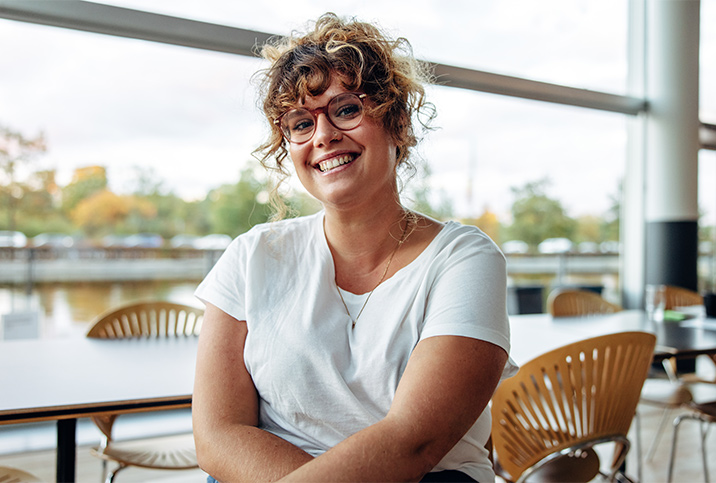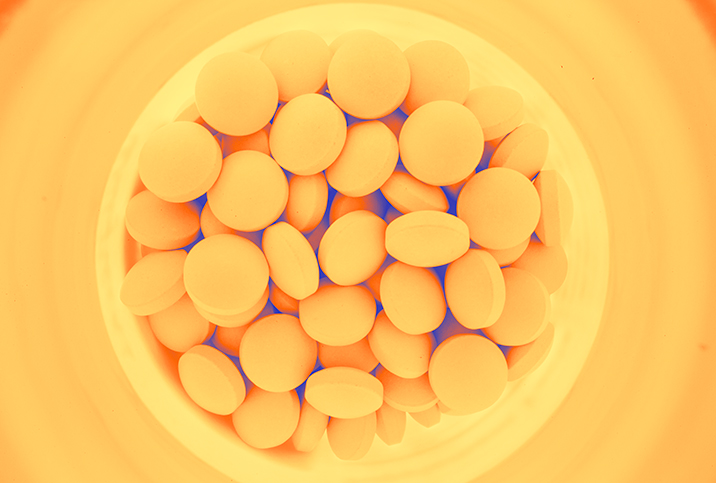Know Your Yeast Infection Treatment Options

A yeast infection is a very common vaginal condition, and most people with a vagina experience one at some point. The good news is that yeast infections can be easily treated with over-the-counter (OTC) medications.
"Untreated yeast infections don't typically turn into a life-threatening health issue, but they can be extremely uncomfortable. As such, most patients will be seeking out a solution," said Kiarra King, M.D., an OB-GYN based in Illinois.
Annoyingly, yeast infections also have a nasty tendency to come back even after treatment. If you've ever had to deal with recurring yeast infections, you know firsthand how frustrating this can be.
Learn more about the different treatment options for yeast infections, whether popular home remedies are reliable and why yeast infections sometimes come back.
What is a yeast infection?
"A yeast infection is an overgrowth of the yeast Candida, most commonly candida albicans, but it can also be caused by other species like C. glabrata, C. parapsilosis and C. tropicalis," said Krystal Thomas-White, Ph.D., a senior scientist at Evvy, and based in California. "It's actually normal for your vaginal microbiome to have small amounts of candida; about 20 percent of women have candida without any symptoms."
Things can become complicated, though, when candida grows too much and colonizes the vaginal microbiome. It leads to an infection and creates classic symptoms, which Thomas-White said include cottage cheese-like discharge, burning, itching and painful sex and urination.
How is a yeast infection diagnosed?
Yeast infections share symptoms with other vaginal infections, such as bacterial vaginosis (BV), and sexually transmitted infections (STIs), such as trichomoniasis and others. You might be tempted to self-diagnose, but it's better to speak to your healthcare provider or OB-GYN to make sure you get the proper treatment.
Yeast infections are diagnosed through a pelvic exam. Your doctor examines your vulva and vagina for any swelling or redness and takes a swab from the inside of your vagina to check if there's any yeast present.
How is a yeast infection treated?
The best treatment for yeast infections depends on a few factors, including how severe your symptoms are and what strain of Candida is causing the infection.
Antifungals
Since yeast infections are caused by fungus overgrowth, antifungal medications are considered the first-line treatment for yeast infections. These include:
- Clotrimazole
- Miconazole
- Tioconazole
- Butoconazole
- Terconazole
OTC antifungals come in the form of a cream, an ointment or a suppository taken vaginally for a course of one, three or seven days. If your infection is really bad or tends to come back, you might have to take the medications for a while longer.
Alternatively, your doctor might prescribe a single dose of fluconazole, a type of oral antifungal pill. This drug is available only with a prescription and isn't recommended if you're pregnant.
Boric acid
Boric acid is a popular OTC treatment for yeast infections and BV.
"Boric acid is used as a way of disrupting the cycle of infections because of its antimicrobial and antifungal properties," Thomas-White said. "Research has shown that boric acid is effective at treating yeast infections when antifungals aren't doing the trick. This is especially true for recurrent yeast infections caused by non-albicans species of Candida. Current CDC guidelines recommend 600 [milligrams] of boric acid in a gelatin capsule administered vaginally once daily for three weeks."
While boric acid is readily available, the first step before using it is to confirm what strain of Candida is causing your yeast infection.
"If you're struggling with recurrent yeast infections and are considering using boric acid, it's best to get your boric acid suppositories prescribed by a doctor," Thomas-White said. "This is for two reasons. First, you should always consult a medical professional before putting any new treatment in or around your vagina. And second, boric acid from a doctor is typically purer than those sold online."
Probiotics
Probiotics are all the rage at the moment, but are they effective treatments for yeast infections?
"ACOG [American College of Obstetricians and Gynecologists] states that 'use of lactobacilli products orally or vaginally is not effective for treatment or prevention of vulvovaginal candidiasis,'" King said.
"The effectiveness of vaginal probiotics is still being tested, so we don't currently have research on how effective they may be in preventing or treating yeast infections," Thomas-White added. "When it comes to your vagina, there can be too much of a good thing, including lactobacilli, the protective bacteria that are usually found in probiotics. An overgrowth of lactobacilli can actually cause symptoms and is linked to a condition known as cytolytic vaginosis, which can have symptoms similar to a yeast infection.
"So, again, test before you treat," Thomas-White said.
Alternative treatments
A whole host of alternative therapies and home remedies has been touted to clear up a yeast infection, including tea tree oil, garlic and yogurt. However, research has found no evidence that these remedies are effective in treating yeast infections.
Douching also isn't recommended for treating yeast infections (or at all, really). Douching can even increase the risk of developing vaginal infections.
Can a yeast infection come back after treatment?
Sometimes yeast infections are the gift that keeps on giving. About 75 percent of women develop a yeast infection at some point, and up to 5 percent experience recurrent infections.
"Recurrence is considered when a patient has had four yeast infections within a 12-month time frame," King said. "Yeast infections may be refractory in the event that the wrong strain is being treated. For those patients, strain confirmation is necessary, and then, typically, an extended treatment regimen is administered."
The most commonly diagnosed strain is Candida albicans, but the antifungals used for C. albicans aren't usually effective in treating atypical strains such as C. glabrata, she added.
Some medical conditions, such as uncontrolled diabetes, and medications can also make a yeast infection more likely to recur after treatment.
If you are concerned about a potential yeast infection, consult your doctor. If you're looking for a new doctor—you've moved, your longtime physician retired, you just need a change—Giddy Telehealth makes the search simpler. The easy-to-use online service provides access to hundreds of healthcare professionals who have expertise across the full scope of medical care. Many of them specialize in women's health and offer same-day video visits.


















